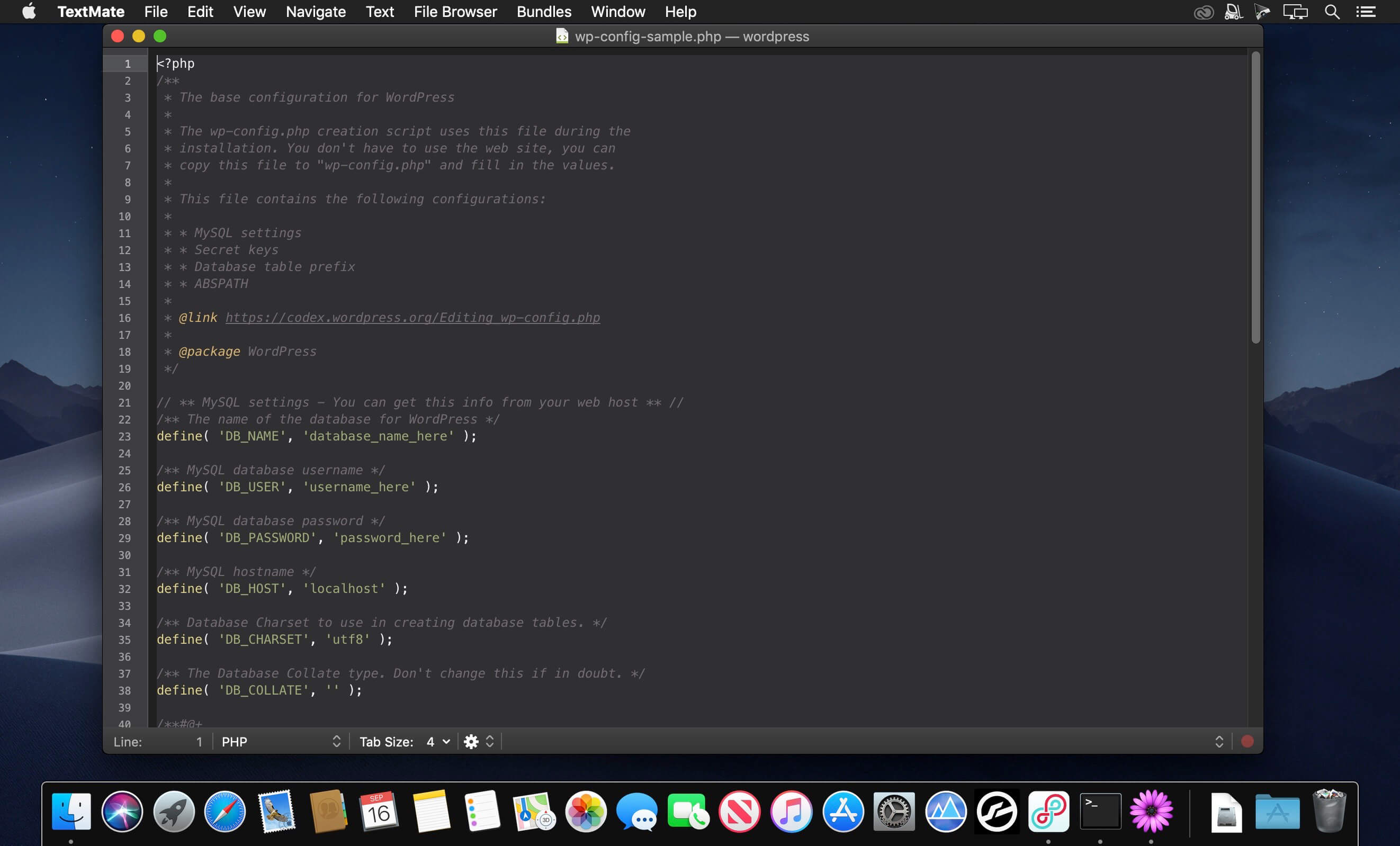

Whereas VS Code and Atom both stubbornly work as single-window apps thanks to the fact that they’re Electron apps, TextMate happily uses windows for everything.

Its UI feels very familiar as a Mac app, too. It somehow beautifully is able to feel at home both as a Mac app and as a hard core editor like emacs, supporting emacs bindings natively. TextMate’s a native Mac app, which gives it a lot of points in my book. Not just because it’s familiar, but because it’s genuinely a great editor. I have, in fact, tried to move full-time to other editors, but I keep coming back to TextMate. You might assume I’m still using TextMate out of stubbornnees or inertia, or maybe I didn’t even give other editors a fair shake. Other editors have since then come along, and although TextMate 2 was released as a beta in 2011, users seemed to feel TextMate’s best days were behind it and they all moved onto other editors.

It pioneered a lot of new things, but I’m pretty sure we hit peak TextMate some time around 2010. If you know the editors out there you know TextMate is kind of a has-been. It’s even become open-source since I started using it. I only just paid for an upgrade for it last fall when TextMate 2 was released out of beta. I’ve used it to implement software and APIs for companies that have gone on to have billion-dollar valuations. It’s been with me through my entire post-college life. TextMate has been with me through most of college, when as a poor college student I got it as part of the first MacHeist bundle. I’ve been using TextMate for almost 15 years now. One of the most striking things about TextMate for me is just how long it’s been a part of my life.


 0 kommentar(er)
0 kommentar(er)
